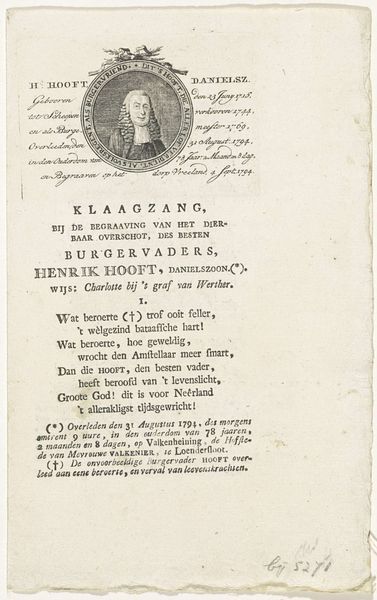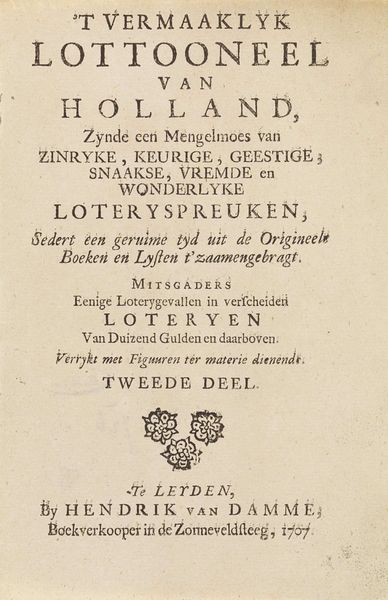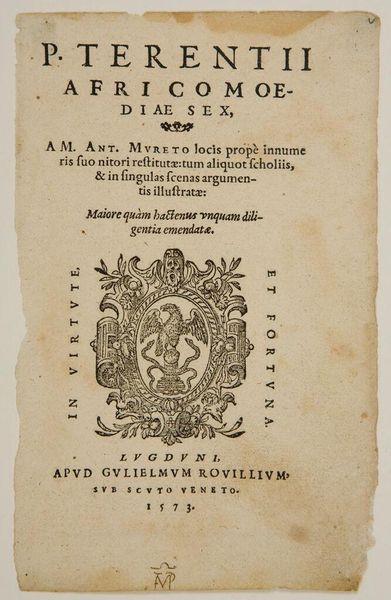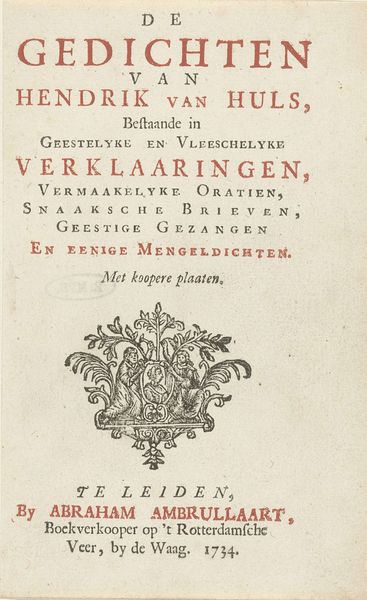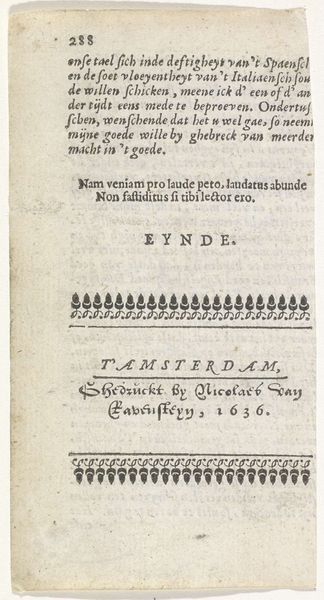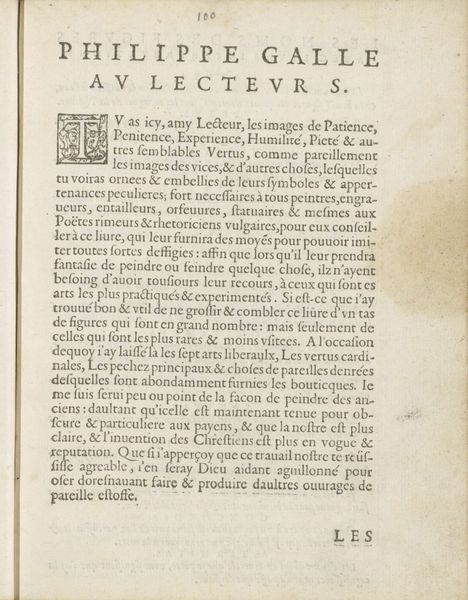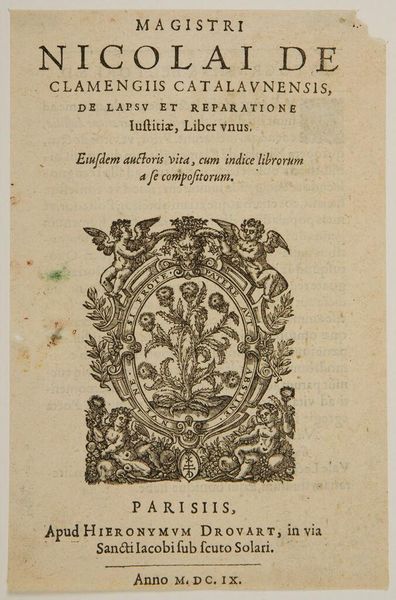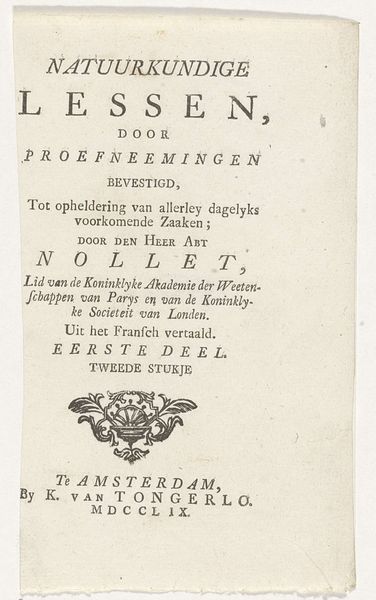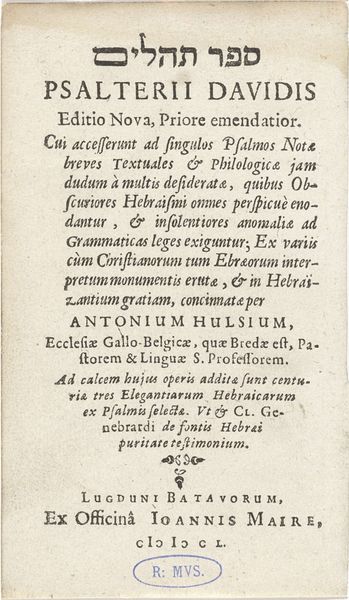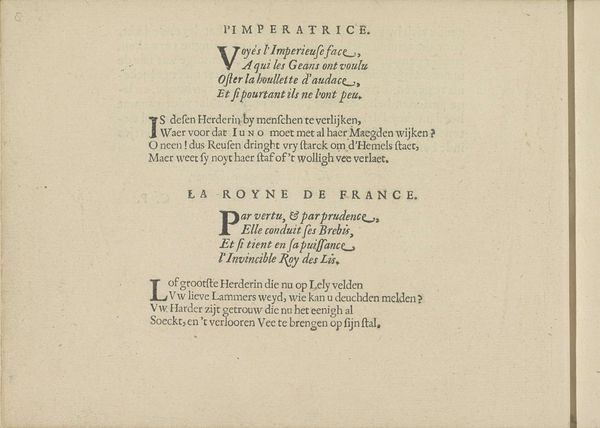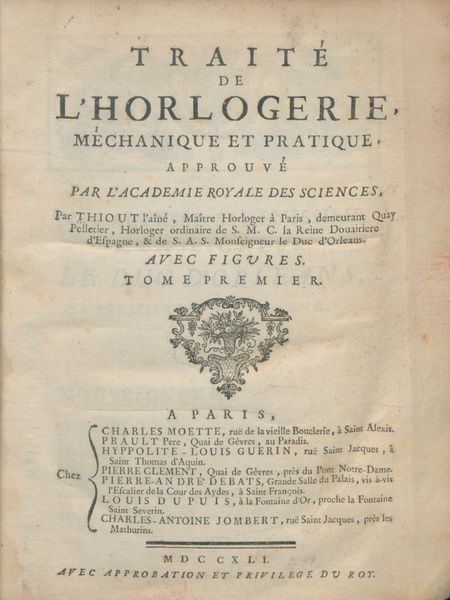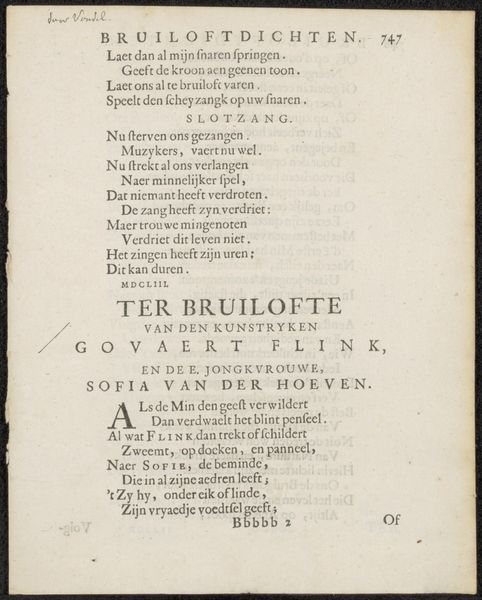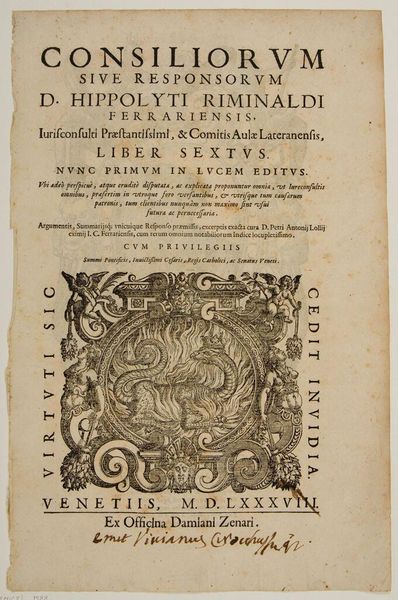
graphic-art, print, typography, engraving
#
graphic-art
#
aged paper
#
hand written
#
hand-lettering
#
baroque
# print
#
old engraving style
#
hand drawn type
#
personal sketchbook
#
typography
#
hand-drawn typeface
#
ink colored
#
sketchbook drawing
#
sketchbook art
#
engraving
Dimensions: height 170 mm, width 99 mm
Copyright: Rijks Museum: Open Domain
Editor: So, this engraving, titled "Spelregels bij het kaartspel 'Jeux Historiques des rois de France,'" dates back to 1698. The artist, Jean Desmarests, details rules of a card game. It's text-heavy, with a certain decorative charm, all about playing cards. What grabs your attention when you look at this piece? Curator: What interests me is not the aesthetic appeal, but its context of production and distribution. It says "Avec Privilege du Roy," implying a specific social structure and legal framework enabling its creation and sale. Editor: That’s a fascinating point. The "Privilege du Roy" acted like a copyright, right? How did that affect the lives of artists and printers back then? Curator: Precisely. It highlights how artistic production was interwoven with royal authority and economic control. Access to materials, the freedom to produce, even the right to sell – all were mediated through this system of royal privilege. The *means* of producing this object determined its existence. Editor: So, someone else lacking that privilege wouldn’t have been able to just print and sell this game, even if they had the materials and skills? Curator: Exactly! It reveals the control over intellectual and material property. The labor involved – the engraver's skill, the printer's work, the paper maker's craft – are all operating under these constraints. Where did they get the paper? How were these engravings sold to people? It raises fundamental questions about how cultural goods circulated in society. Editor: It changes how you look at it. I was just seeing a fancy old print. Now I am thinking about social hierarchy. Curator: Precisely! It reminds us to analyze the production behind artistic creation, from materials to the complex economic and social conditions that give artworks life. Editor: Thanks! It's like unpacking layers of history. I appreciate your insights into its socio-economic elements, especially in relation to Baroque culture and graphic arts of the era. Curator: It has been my pleasure!
Comments
No comments
Be the first to comment and join the conversation on the ultimate creative platform.
